For review, Taurus sent me the Defender 856, a small revolver chambered in .38 special +P. “+P” and “+P+” refer to higher-pressure ammunition that typically produces higher muzzle velocities than standard ammo from the same gun. Guns capable of firing higher pressure ammo can also fire standard ammo, but not vice-versa, so be sure you match the ammo you obtain for a gun to what the gun manufacturer says is safe for the gun.
Sponsored by Taurus
I specifically asked for the stainless steel frame, with a special snake-like look on the grip – from VZ Grips. The barrel is a mere 3 inches, and the revolver is lightweight but controllable. The fit and finish of the gun are good, it felt good in my hand and I was able to handle the gun comfortably while firing accurate center-of-mass shot strings at 7 yards, in rapid fire.
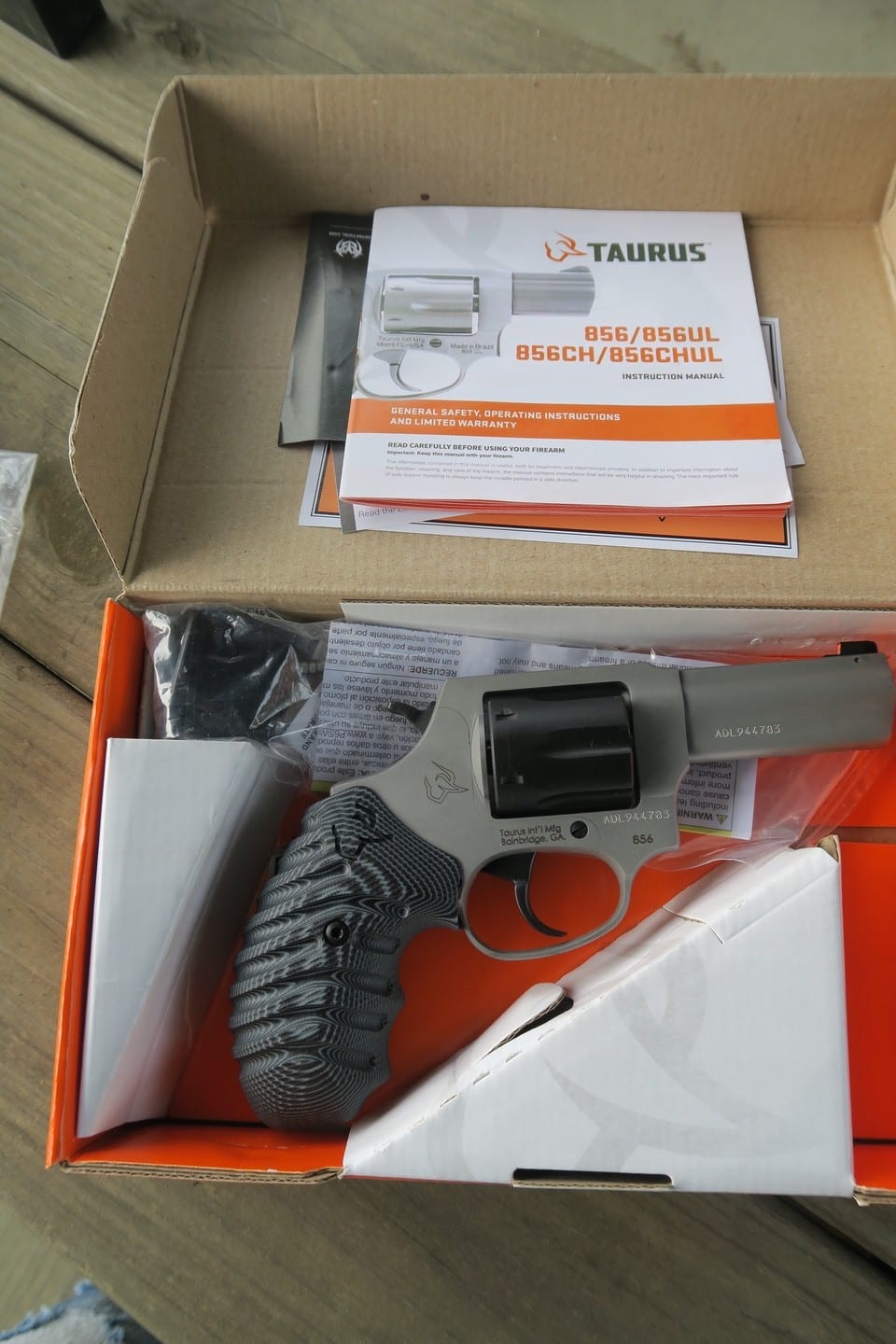
What about the trigger pull? It’s pretty hefty, in both single-action and double-action. I didn’t have any problems with it, but I realized that some folks might not have the hand strength to fire the gun in double-action (the way one would fire it if using it for Every Day Carry – EDC). In fact, while I was evaluating the Defender 856 a visiting friend – a prominent gun enthusiast in the legal world – attempted to fire it double-action and couldn’t. As such, she wouldn’t have purchased a revolver such as this one for defensive purposes because she didn’t have the hand strength to pull the trigger! So, this is why I wanted to write about the topic, “What you must do if you want to shoot a revolver.”
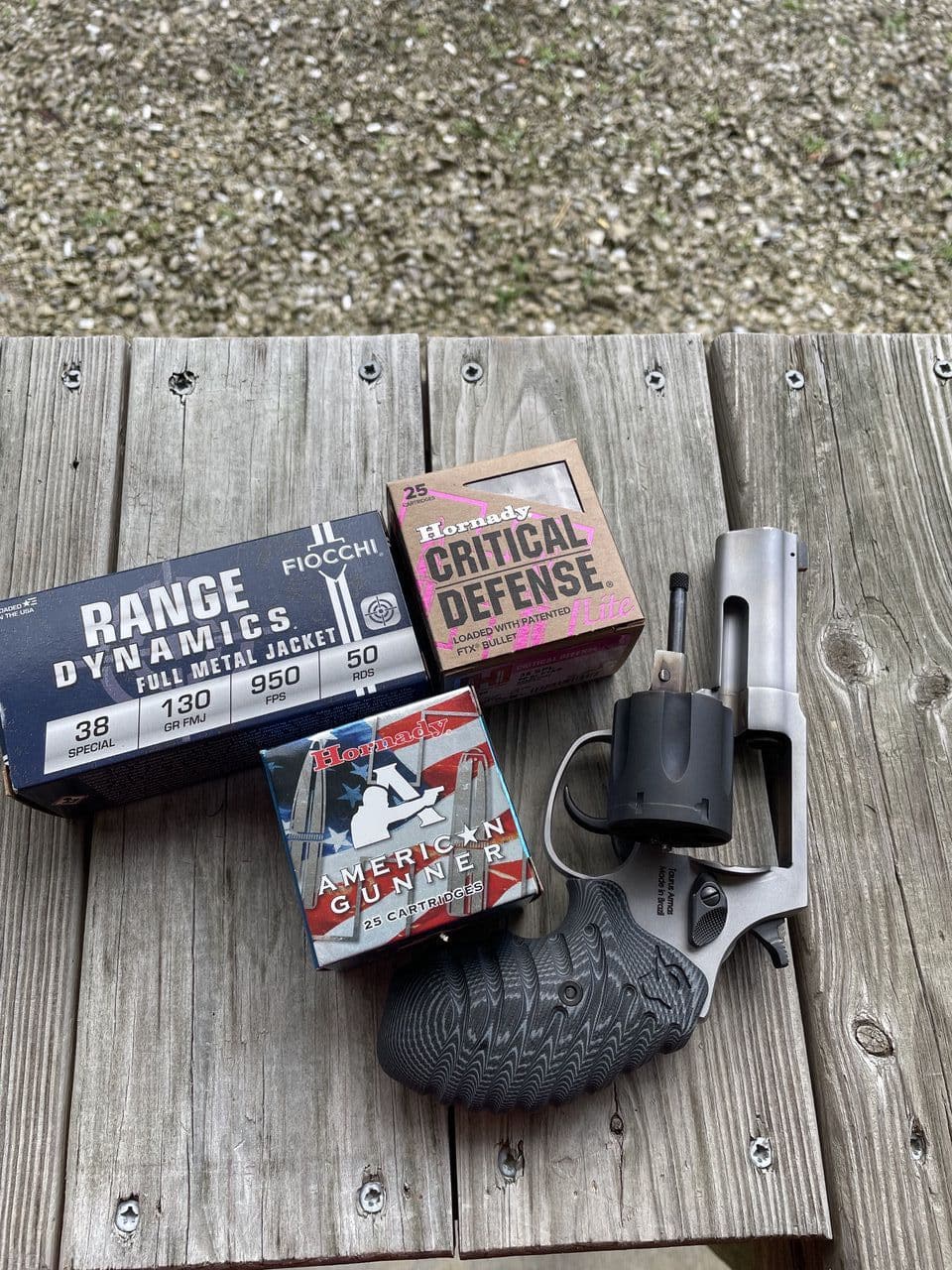
How many times have we heard of well-meaning spouses, boyfriends, gun store associates telling women to buy revolvers for self-defense, because these firearms are “simple” to operate and rarely malfunction? That, in itself, is a bit of a slap – we females don’t need “simple;” anyone may prefer the simplicity of a revolver and the fact that they don’t have the malfunctions associated with them that semi-autos have. Even though revolvers malfunction, those are rare and due to either poor assembly (at the factory or by the shooter after disassembly for cleaning, etc.), faulty ammunition (high primers, for example), parts worn from long use or damage due to abuse. There’s no “tap, rack, bang” sort of drill required for a revolver.
An article by popular gun writer Ed Combs, over at the May/June 2023 issue of USCCA’s Concealed Carry Magazine, titled, “Rethinking Semi-Auto Versus Revolver Mental Reboot,” caught my eye. One piece of advice that Combs offers to revolver shooters is this: “If you can’t press a double-action revolver’s trigger while keeping its muzzle pointed at your target, don’t buy one.” Which made me wonder, “What about if you had to shoot double-action, but with one hand, with no support hand involved at all?” Why would one ever have to do this? There are several scenarios where one-handed shooting using either hand might be necessary – injuries, obstructions, etc.
Also, it’s one thing to press the trigger on an unloaded gun pointed in a safe area in a gun store, but it’s another thing entirely, to load 6 rounds into the cylinder and shoot at a target and aim for not only speed, but center of mass accuracy.
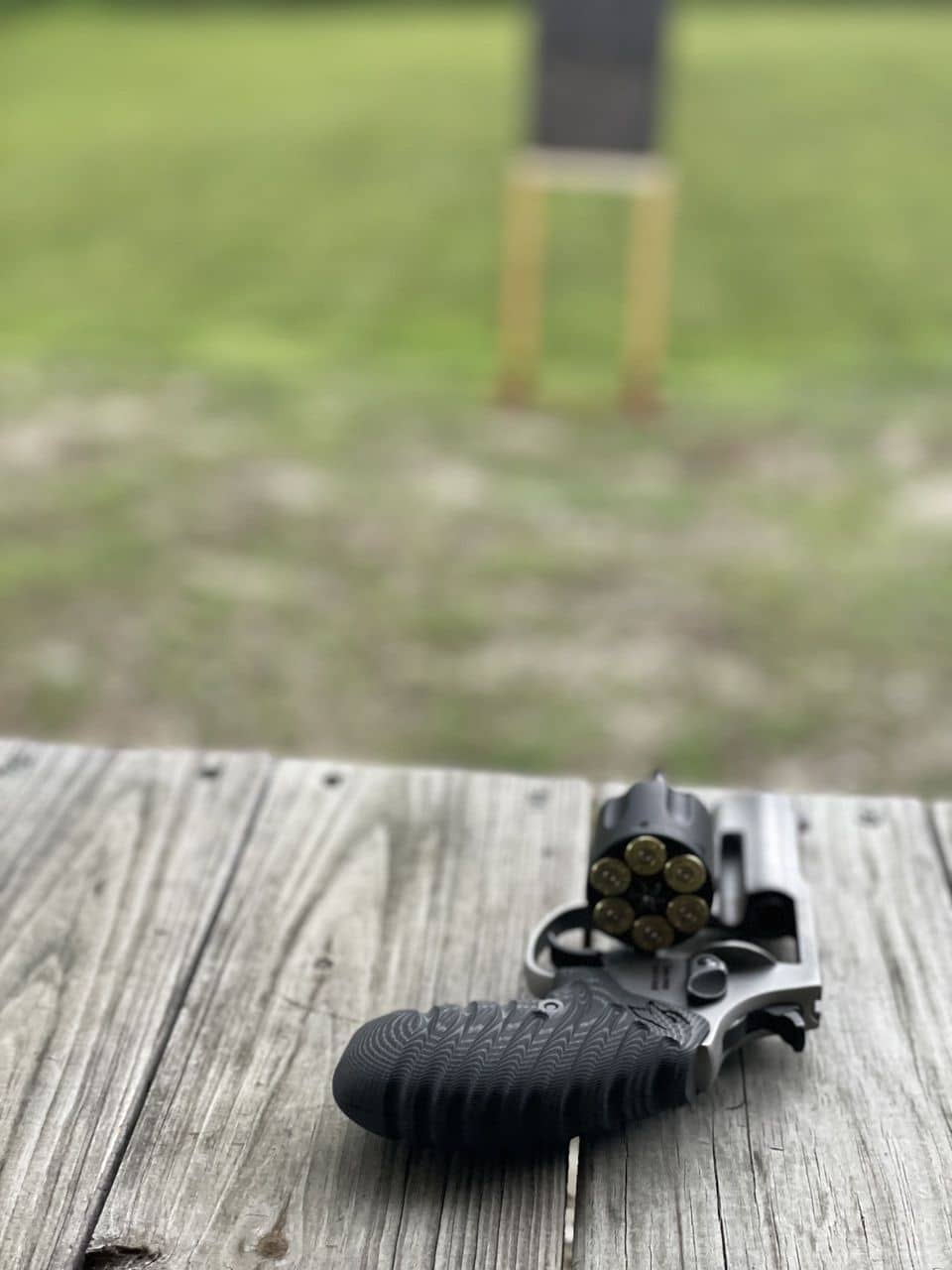
In my opinion, you should take these steps if you want to purchase and carry a revolver:
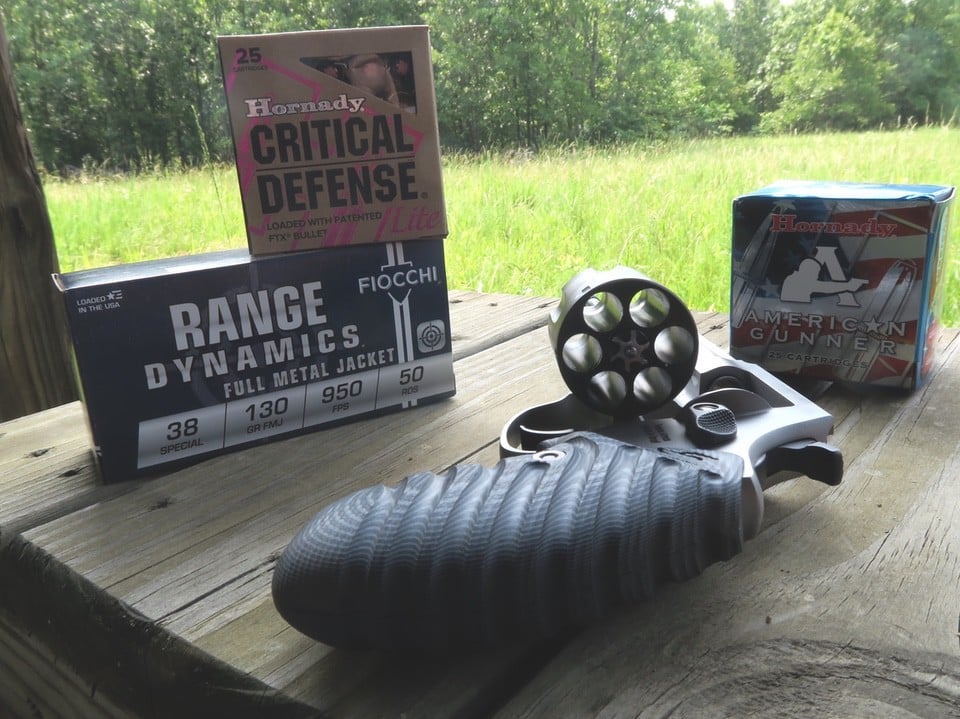
While we’re on the grip topic, pardon me while I pick a bone. Forget about the current advice from tactical/alphabet soup (IPSC USPSA etc.) shooters regarding having a bone-crushing grip on your poor shooting hand with your support hand (it’s a support hand, for Pete’s sake), because you don’t have a support hand in this scenario! You’re shooting one-handed, so there ain’t no support hand. What to do? Use the same gripping technique taught to military shooters since time immemorial. Principally, don’t worry so much about stance so long as it’s a balanced (boxer’s) stance. Grip the pistol in whichever hand is doing the shooting as high up on the grip as you can, so that the portions of your little, ring, and index fingers between their first and second joints are aligned against the front of the grip and centered under the trigger guard (forget about the tips of those fingers; let ‘em stick out). The rear of the grip should naturally trap itself between the meaty part of the ball of your hand and your palm. Allow your thumb to relax itself along the side of the grip, out of the way of whatever is on that side of the gun frame (revolver cylinder latch, etc). Now, keeping your fingers and thumb in this configuration, squeeze the grip hard between your fingers and the ball of your thumb so that there is fore and aft pressure on the grip – no rotations, no fingertip pressures, no thumb tip pressures. Anything other than fore-aft pressure will rotate the gun as you press the trigger. As you press the trigger, don’t increase or decrease your grip squeeze. If you cannot get your hand to create this cradle configuration on the grip of a particular handgun, the grip is either too big or too small and you shouldn’t choose the gun for a personal defense weapon, because this is the grip you will need if you are to shoot a gun accurately with one hand. If/when you want to get a support hand involved in this, add it to your grip by inserting the ball of the thumb of your support hand into and letting it rest in the gap between your shooting hand fingertips and the ball of your shooting hand thumb. Wrap your support hand fingers around your shooting hand as it grips the pistol grip, while leaving your support thumb relaxed. Use your support hand as support for your shooting hand by providing reward pressure straight back against the shooting hand in order to lock-up the wrist, elbow and shoulder joints in the arm of your shooting hand. Don’t allow your support hand to introduce rotational or side-to-side pressure on your shooting hand; your support hand just exerts force straight to the rear.
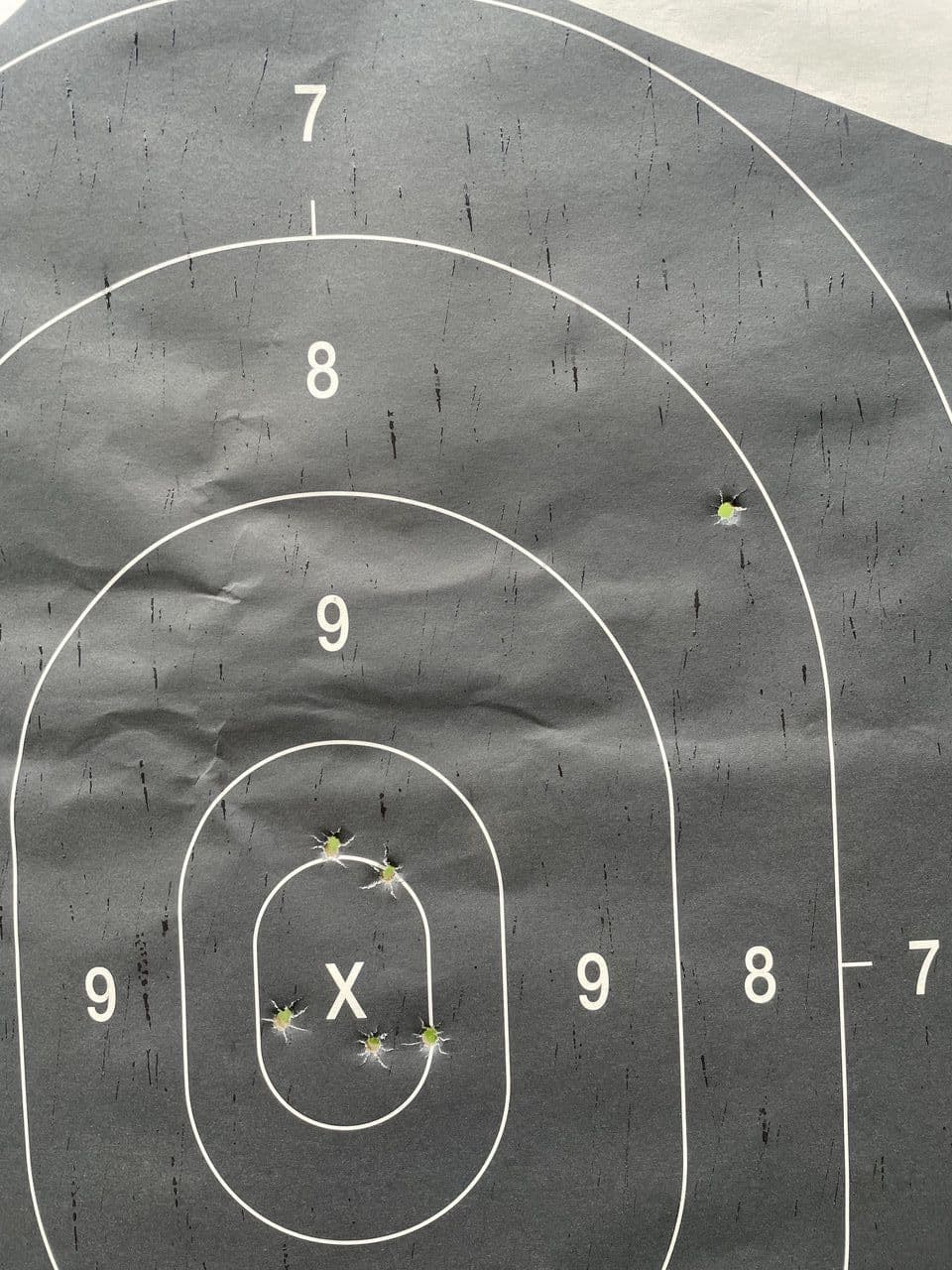
Then, if you’re comfortable with the results and you’re ready, switch over to your weak hand as the major gripper and your other hand as the support hand. You may want to dry fire in this manner for a while, first.
After shooting with your opposite hand as your dominant hand, drop your support hand back to your chest area, and shoot single-handed with your opposite hand.
You only need to shoot 3 to 6 rounds each time, once you’ve accomplished a good group in each version.
It’ll be snappy. It’s rather exciting. It’s absolutely necessary for revolver handling that you practice in these ways. You can add pulling from a holster later.
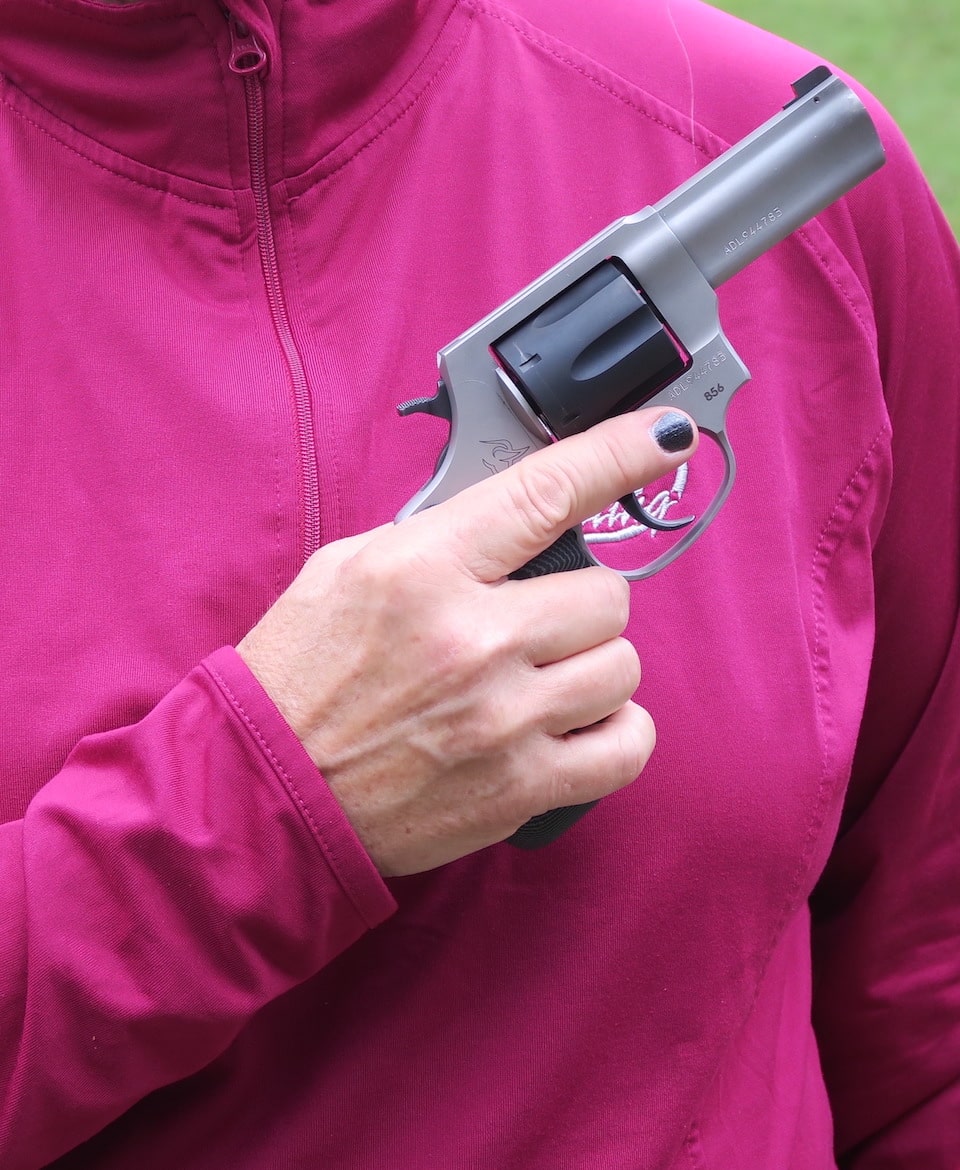
Another cool thing to add to your training is a timer. Ask someone to time you as pull from a holster or start at the low ready. You should be on target within a few (like 3) seconds. Can you do this? And, you don’t have to do it 100 times in one session, but you absolutely must be able to do this 6 times – to empty the cylinder if necessary – in one go, smoothly. Or else, look for another concealed-carry gun.
In the meantime, the Taurus 856 is available and affordable. It comes in 19 options here, including a few “Defender” models, such as the one I shot. (MSRP: $499)
To test the gun’s accuracy, I set up the target frame at seven yards and used paper plates, one per group, with dots drawn in the center as targets. The dot is a good aim point, and since we were shooting groups instead of bullseye shooting, blank paper plates provided a good indicating surface. Testing involved shooting three groups of five shots per ammo type at the dot from a seated bench position.
Here are the results of the tests, in inches:
Fiocchi Range Dynamics, 130 grain, full metal jacket: largest group – 1.75; smallest group – .5; average – 1.08
Hornady FTX Critical Defense, 90 grain: largest group – 2.25; smallest group – 1.0; average – 1.5
Hornady American Gunner, 125 grain, XTP: largest group – 1.0; smallest group – .5; average – .67
Publisher/Editor Barbara Baird is a freelance writer in hunting, shooting and outdoor markets. Her bylines are found at several top hunting and shooting publications. She also is a travel writer, and you can follow her at https://www.ozarkian.com. View all posts by Barbara Baird
[…] If you have never worked with or owned a revolver before, take some time to learn about the way a single-action revolver works. Look at the manual that came with your gun and watch a few videos. Barbara Baird, publisher of The WON, recently wrote a related post called “What You Must Do If You Want to Shoot a Revolver.” […]